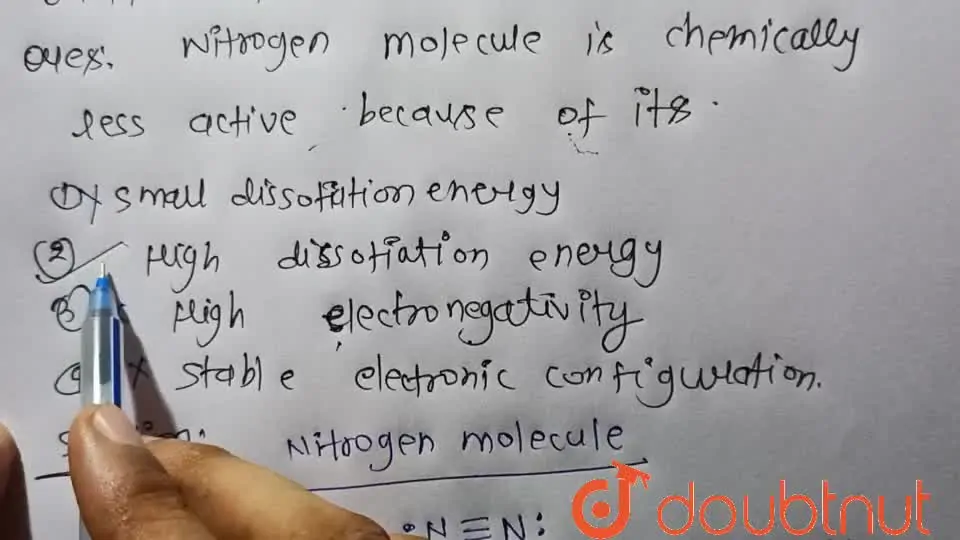Nitrogen molecule is chemically less active because of its
Small dissociation enegry
High dissociation energy
High electronegativity
Stable electronic configuration
The correct Answer is:B
Step by step video & image solution for Nitrogen molecule is chemically less active because of its by Chemistry experts to help you in doubts & scoring excellent marks in Class 12 exams.
Related Playlists
- BOOK - CENGAGE CHEMISTRY ENGLISHCHAPTER - P-BLOCK GROUP 15 ELEMENTS - THE NITROGEN FAMILYEXERCISE - Exercises (Integer)20videos
P-BLOCK GROUP 15 ELEMENTS - THE NITROGEN FAMILY
- BOOK - CENGAGE CHEMISTRY ENGLISHCHAPTER - P-BLOCK GROUP 15 ELEMENTS - THE NITROGEN FAMILYEXERCISE - Exercises (Fill In The Blanks)15videos
P-BLOCK GROUP 15 ELEMENTS - THE NITROGEN FAMILY
- BOOK - CENGAGE CHEMISTRY ENGLISHCHAPTER - P-BLOCK GROUP 15 ELEMENTS - THE NITROGEN FAMILYEXERCISE - Exercises (Multiple Correct)12videos
P-BLOCK GROUP 15 ELEMENTS - THE NITROGEN FAMILY
- BOOK - CENGAGE CHEMISTRY ENGLISHCHAPTER - ORGANIC COMPOUNDS WITH FUNCTIONAL GROUPEXERCISE - Archives Analytical And Descriptive24videos
ORGANIC COMPOUNDS WITH FUNCTIONAL GROUP
- BOOK - CENGAGE CHEMISTRY ENGLISHCHAPTER - P-BLOCK GROUP 16 ELEMENTS - THE OXYGEN FAMILYEXERCISE - Archives Subjective10videos
P-BLOCK GROUP 16 ELEMENTS - THE OXYGEN FAMILY
Similar Questions
Which of these molecule is optically active ?
 View Solution
View SolutionAssertion : Small cells are metabolically less active
Reason : K.I. of small cells is less.View SolutionWater of crystallization is the definite number of water molecules chemically combined with a salt in its crystalline form. (T/F)
View SolutionThe average speed of nitrogen molecules in a gas is v. If the temperature is doubled and the N2 molecule dissociate into nitrogen atoms, then the average speed will be
View SolutionOxygen molecule is paramagnetic because
View SolutionAir consists mainly of nitrogen and oxygen molecules. Relative molecular masses of nitrogen and oxygen are 28 and 32 respectiely. Calculate :
(i) the ratio of the rms speed of nitrogen molecules to that of the oxygen molecules in air and
(ii) the ratio of the r.m.s. speed of oxygen molecules in air at 0∘C to that at 10∘C.View SolutionNitrogen is relatively inactive element because
View SolutionNitrogen is relatively inactive element because
View SolutionRNA molecules having catalytic activity are called
View SolutionAn alkaloid contains 17.28% of nitrogen and its molecular mass is 162. The number of nitrogen atoms present in one molecule of the alkaloid is
View Solution


